Gaming (Jon Mollison): Miniature wargaming, fantasy or historical or sci-fi, can provide insights into the realities and complexities and challenges of conflict. And with greater understanding comes greater wisdom, and with greater wisdom comes a greater ability to find the often camouflaged path to peace. Besides, most of the guys who profess worries over wargaming in a time of war have no genuine intention to put their hobby on pause.
Appendix N (Goodman Games): Born in 1912, Alice Mary Norton worked as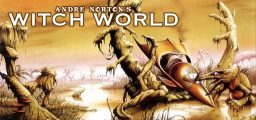 a teacher, a librarian, and finally a reader for Gnome Press before becoming a full-time writer in 1958. By then she’d already had a dozen books published, including such classics as Star Man’s Son, 2250 A.D. and Star Rangers. Based on their easy style and simpler characterizations, most of her early books would probably be classified as YA today.
a teacher, a librarian, and finally a reader for Gnome Press before becoming a full-time writer in 1958. By then she’d already had a dozen books published, including such classics as Star Man’s Son, 2250 A.D. and Star Rangers. Based on their easy style and simpler characterizations, most of her early books would probably be classified as YA today.
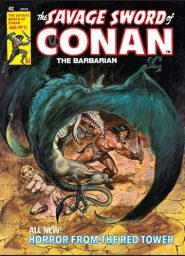 Conan (Sprague de Camp fan): “Drums of Tombalku” first appeared in Conan the Adventurer, Lancer Books, 1966. Per the publication information in this book: “In 1965, Glenn Lord, literary agent for the Howard estate, discovered, in a batch of Howard’s papers, an outline of this story [synopsis] and a rough draft of the first half of it. L. Sprague de Camp edited the existing text and completed the story according to Howard’s outline.” A new edited version of the draft appeared in The Pool of the Black One, Donald M. Grant, 1986.
Conan (Sprague de Camp fan): “Drums of Tombalku” first appeared in Conan the Adventurer, Lancer Books, 1966. Per the publication information in this book: “In 1965, Glenn Lord, literary agent for the Howard estate, discovered, in a batch of Howard’s papers, an outline of this story [synopsis] and a rough draft of the first half of it. L. Sprague de Camp edited the existing text and completed the story according to Howard’s outline.” A new edited version of the draft appeared in The Pool of the Black One, Donald M. Grant, 1986.
Review (With Both Hands): When I got a request from Alexander Hellene to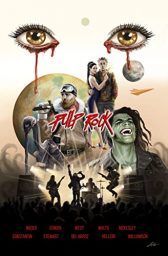 review this volume of musically inspired short stories, I had to laugh, because I am one of the least musical people I know. I can lose the beat of a song I am listening to. I’m sure I missed a couple of dozen really awesome musical references. However, I was pleased to agree to provide a review, as I have read works by several of the authors contributing to Pulp Rock [Amazon link], and I had a reasonable expectation of enjoying it.
review this volume of musically inspired short stories, I had to laugh, because I am one of the least musical people I know. I can lose the beat of a song I am listening to. I’m sure I missed a couple of dozen really awesome musical references. However, I was pleased to agree to provide a review, as I have read works by several of the authors contributing to Pulp Rock [Amazon link], and I had a reasonable expectation of enjoying it.
Fantasy (One Last Sketch): Imaro: The Naama War is an unexpected novel, for two reasons: While the third Imaro novel, Imaro III: The Trail of Bohu was first published in the 1980s, The Naama War didn’t see the light of day until 2009, though not through any fault by the author. The Naama War has a different structure and tone from where the series began. I never would have predicted it would end quite like this.
Cinema (Catholic Review): An Arthurian legend comes to the big screen in

Those on the lookout for a fast pace and a straightforward message, however, will likely come away unsatisfied. And even some grown-ups may find its treatment of sexual passion too intense for their taste. Lowery artfully adapts the 14th-century romance “Sir Gawain and the Green Knight,” a tale about chivalric courage as well as honesty and chastity.
Writing (Rawle Nyanzi): The damsel in distress: a scenario where an attractive female is abducted by a villain, and a hero — usually male — has to save her. Once a common motif in popular culture, it has fallen out of favor in modern times because critics and creatives alike consider it limiting or objectifying. Films like the first Star Wars, Terminator, even the first Bad Boys, — situations like that have been replaced by “action girls” like Furiosa of Mad Max: Fury Road or Rey from the newer Star Wars films. This is hailed as a step forward in storytelling, a rejection of old and bigoted ideas in favor of progress and inclusion.
Games (Worth Playing): John Carter: Warlord of Mars starts in 1945, the gameplay will centre on the soldier John Carter, working on a mission to find Hitler’s secret projects operation. The orders for this mission come directly from Ian Fleming, triggering the start of an epic sci-fi adventure. During the adventure John Carter finds experimental technology that ultimately transports him to ‘Barsoom’ known to us on Earth as the fourth planet in our solar system, the red planet, Mars.
Art (DMR Books): Simon ‘Biz’ Bisley turned sixty yesterday. That would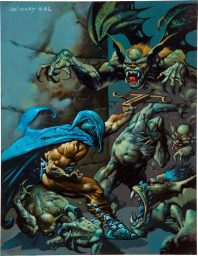 mark roughly forty-five years in the art business. Simon sold his first piece of art to the UK’s premier heavy metal mag, Kerrang!, when he was fifteen. He would go on to do several covers for various British metal bands–which I detailed here–before being snagged by Pat Mills at Fleetway Comics to revive the ‘ABC Warriors’ comics series.
mark roughly forty-five years in the art business. Simon sold his first piece of art to the UK’s premier heavy metal mag, Kerrang!, when he was fifteen. He would go on to do several covers for various British metal bands–which I detailed here–before being snagged by Pat Mills at Fleetway Comics to revive the ‘ABC Warriors’ comics series.
Writing (Silver Key): Joe Lansdale is one of my favorite authors. He consistently delivers good, tightly-plotted stories, populated with memorable characters, and moments of violence, sometimes shocking, but leavened with a great sense of humor throughout. He keeps you turning the pages, which in and of itself is an art form. He has a inimitable voice that comes through on every page.
Science Fiction (Strange at Ecbatan): Robert Holdstock (1948-2009) is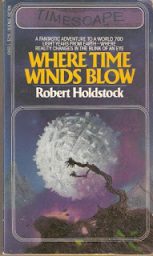 nowadays almost entirely known for his series of fantasy stories and novels beginning with the most famous, Mythago Wood (novella in 1981, novel in 1984.) The novella appeared in F&SF about when I graduated from college, at which time I had let my F&SF subscription lapse. Both novella and novel were huge successes (the novel won the World Fantasy Award) and they were followed by several sequels.
nowadays almost entirely known for his series of fantasy stories and novels beginning with the most famous, Mythago Wood (novella in 1981, novel in 1984.) The novella appeared in F&SF about when I graduated from college, at which time I had let my F&SF subscription lapse. Both novella and novel were huge successes (the novel won the World Fantasy Award) and they were followed by several sequels.
Cinema (Neotext Corp): Set on Io, Jupiter’s third-largest Galilean moon,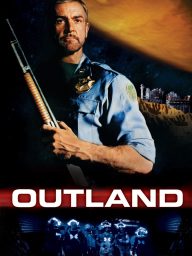 Peter Hyams’ 1981 science fiction thriller film Outland has often been described as a space western. Starring Sean Connery, Peter Boyle and Frances Sternhagen, this film written by Hyams himself has several thematic connections with Fred Zinnemann’s western classic High Noon, which is a feat not missed by the critics. Even though it received mixed reviews upon release, there were more than several very positive ones, such as The Philadelphia Inquirer – Desmond Ryan called it “a brilliant sci-fi Western” and a film “in many ways more frightening than Alien, because Hyams surmises that space will change us very little and the real monsters we are liable to encounter will be in the next spacesuit.”
Peter Hyams’ 1981 science fiction thriller film Outland has often been described as a space western. Starring Sean Connery, Peter Boyle and Frances Sternhagen, this film written by Hyams himself has several thematic connections with Fred Zinnemann’s western classic High Noon, which is a feat not missed by the critics. Even though it received mixed reviews upon release, there were more than several very positive ones, such as The Philadelphia Inquirer – Desmond Ryan called it “a brilliant sci-fi Western” and a film “in many ways more frightening than Alien, because Hyams surmises that space will change us very little and the real monsters we are liable to encounter will be in the next spacesuit.”
Gaming (Horde of the Things): Fired up by the ADLG game on Thursday, I
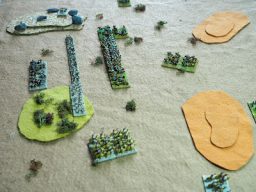
OLYMPUS DIGITAL CAMERA
decided to get some DBA armies out over the weekend. I had a look through my blog and realised that my Roman desert frontier armies hadn’t seem the light of day for five years, so I gave a couple of them an airing. First up were the Parthians, who were attacking an Early Pre-Islamic Arab Nomad army. I selected the armies at random; where there was a choice of elements for a slot I diced for each one (within the limits of my figure collection). This gave the following armies:
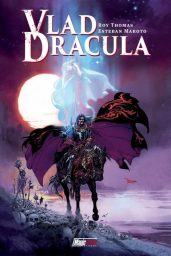 Art (DMR Books): Esteban Maroto Torres started his career in the early 1960s, working under the guidance of Manuel López Blanco in Madrid. Together with Carlos Giménez, he began an independent artistic career with such strips as ‘Buck John’ and ‘El Príncipe de Rodas’. (…) Maroto established his unique graphic style in 1967 with his long series ‘Cinco por Infinito’ (‘Zero Patrol’, published in Delta 99 and in English by Continuity Comics), followed by ‘La Tumba de los Dioses’.
Art (DMR Books): Esteban Maroto Torres started his career in the early 1960s, working under the guidance of Manuel López Blanco in Madrid. Together with Carlos Giménez, he began an independent artistic career with such strips as ‘Buck John’ and ‘El Príncipe de Rodas’. (…) Maroto established his unique graphic style in 1967 with his long series ‘Cinco por Infinito’ (‘Zero Patrol’, published in Delta 99 and in English by Continuity Comics), followed by ‘La Tumba de los Dioses’.
Fiction (Bill’s Book Blog): Introducing his first three novels in a 1980 omnibus edition, Frederick Forsyth called The Odessa File “the humane one,” to distinguish it from the pure craft of his debut and a nastier tone in his third novel. More than 40 years later, I don’t think anyone has summed up Odessa File nearly as well. It is a very humane sort of thriller, all the more involving and exciting for that.
Science Fiction (First Fandom Experience): John’s group has an interest in E.E. Smith, and he asked if we’d be willing to respond to a number of questions posed by his folks. Since we’ve just completed a deep-dive on Smith’s early history as a fan (for a chapter in our latest book), we were happy to take up the challenge. The list of questions the group compiled is wide-ranging, and we’ll be working through them over the next several weeks. The first query on the list was immediately intriguing: “How did Smith get his famous nickname ‘Doc’?”
E.E. Smith, and he asked if we’d be willing to respond to a number of questions posed by his folks. Since we’ve just completed a deep-dive on Smith’s early history as a fan (for a chapter in our latest book), we were happy to take up the challenge. The list of questions the group compiled is wide-ranging, and we’ll be working through them over the next several weeks. The first query on the list was immediately intriguing: “How did Smith get his famous nickname ‘Doc’?”
Science Fiction (Marzaat): Yes, there’s a Crisis in 2140. That was the better titled selected for the novel when it was republished as part of an Ace Double in 1957. It was originally serialized in the February and March 1953 issues of Astounding Science Fiction, and I suspect editor John W. Campbell gave it a title reminiscent of A. E. van Vogt’s Null-A series which ran in Astounding in the 1940s.
Pulp (Pulp Net): After a 10-year absence, George F. Worts brought back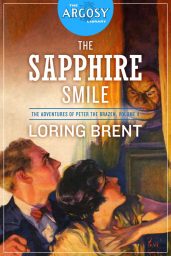 Peter the Brazen to Argosy in 1930. Supposedly this was part of a larger effort to revamp Argosy by bringing back several of their serial characters. Peter Moore is an interesting character: a two-fisted adventurer wandering the exotic Orient between the world wars, going up against several menacing villains. He is known as Ren Beh Tung, “Man of Bronze”, by the Chinese.
Peter the Brazen to Argosy in 1930. Supposedly this was part of a larger effort to revamp Argosy by bringing back several of their serial characters. Peter Moore is an interesting character: a two-fisted adventurer wandering the exotic Orient between the world wars, going up against several menacing villains. He is known as Ren Beh Tung, “Man of Bronze”, by the Chinese.
 Myth (Sagas from the Sea): I was 14 when I saw The Two Towers in the cinema, and I never forgot it. The narrative leads inexorably to the Rohirrim, who even then I recognised as something from England’s ancient past. They wore mail, fought with spears and round shields, lived in wooden halls and had fantastically Old English sounding names like Théoden, Éomer and Théodred. For me, the most striking character was Éowyn, niece to the King and shield-maiden of Rohan.
Myth (Sagas from the Sea): I was 14 when I saw The Two Towers in the cinema, and I never forgot it. The narrative leads inexorably to the Rohirrim, who even then I recognised as something from England’s ancient past. They wore mail, fought with spears and round shields, lived in wooden halls and had fantastically Old English sounding names like Théoden, Éomer and Théodred. For me, the most striking character was Éowyn, niece to the King and shield-maiden of Rohan.
D&D (Grognardia): From the very beginning, the rules of Dungeons & Dragons rewarded high scores in a character’s prime requisite with a bonus to earned experience. Although the actual implementation of this rule varies from edition to edition, it has been present in every version of the game published by TSR. It’s also present in Empire of the Petal Throne, which is hardly surprising, given that its rules are derivative of those of OD&D.
Comic Books (Arkhaven Comics): Two weeks ago there was a story circulating that DC Comics’ few remaining employees that had been working from home, were told to come in to clean out their desks.
Science Fiction (M Porcius): Despite the horror movie cover on my copy, The Dark Light-Years is written in a tone of understated ironic humor and is a satire of stuff we’ve already seen satirized many times before. The covers of some later editions showcase a blurb that lauds the book as “sardonic;” if I had seen one of those editions that makes it clear this is a joke story I probably would not have bought it and would not have read it and right now I’d by writing a blog post about “tales of sex and horror” or some Conan or Tarzan pastiche. (Don’t worry, those blog posts will be coming up soon.)
Always grateful for the shout-out. The Goodman Games site is running some really good articles.